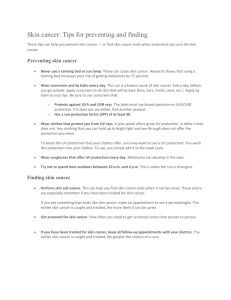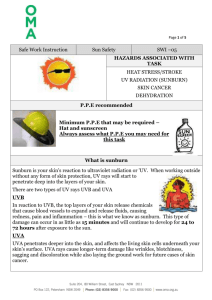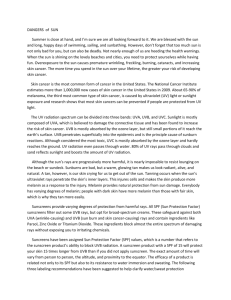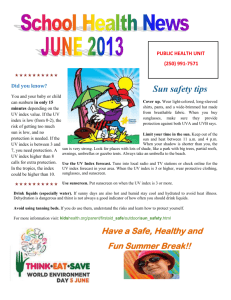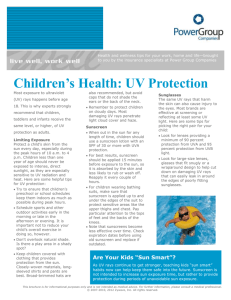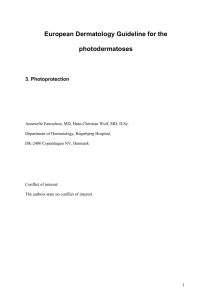Sun and Your Skin
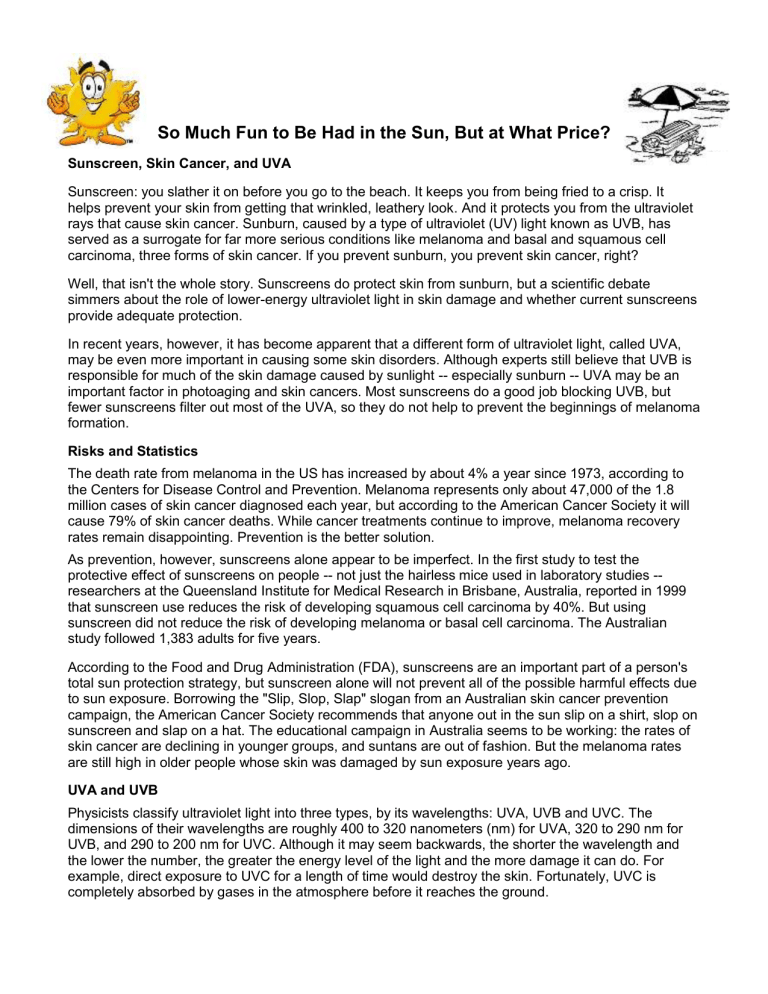
So Much Fun to Be Had in the Sun, But at What Price?
Sunscreen, Skin Cancer, and UVA
Sunscreen: you slather it on before you go to the beach. It keeps you from being fried to a crisp. It helps prevent your skin from getting that wrinkled, leathery look. And it protects you from the ultraviolet rays that cause skin cancer. Sunburn, caused by a type of ultraviolet (UV) light known as UVB, has served as a surrogate for far more serious conditions like melanoma and basal and squamous cell carcinoma, three forms of skin cancer. If you prevent sunburn, you prevent skin cancer, right?
Well, that isn't the whole story. Sunscreens do protect skin from sunburn, but a scientific debate simmers about the role of lower-energy ultraviolet light in skin damage and whether current sunscreens provide adequate protection.
In recent years, however, it has become apparent that a different form of ultraviolet light, called UVA, may be even more important in causing some skin disorders. Although experts still believe that UVB is responsible for much of the skin damage caused by sunlight -- especially sunburn -- UVA may be an important factor in photoaging and skin cancers. Most sunscreens do a good job blocking UVB, but fewer sunscreens filter out most of the UVA, so they do not help to prevent the beginnings of melanoma formation.
Risks and Statistics
The death rate from melanoma in the US has increased by about 4% a year since 1973, according to the Centers for Disease Control and Prevention. Melanoma represents only about 47,000 of the 1.8 million cases of skin cancer diagnosed each year, but according to the American Cancer Society it will cause 79% of skin cancer deaths. While cancer treatments continue to improve, melanoma recovery rates remain disappointing. Prevention is the better solution.
As prevention, however, sunscreens alone appear to be imperfect. In the first study to test the protective effect of sunscreens on people -- not just the hairless mice used in laboratory studies -- researchers at the Queensland Institute for Medical Research in Brisbane, Australia, reported in 1999 that sunscreen use reduces the risk of developing squamous cell carcinoma by 40%. But using sunscreen did not reduce the risk of developing melanoma or basal cell carcinoma. The Australian study followed 1,383 adults for five years.
According to the Food and Drug Administration (FDA), sunscreens are an important part of a person's total sun protection strategy, but sunscreen alone will not prevent all of the possible harmful effects due to sun exposure. Borrowing the "Slip, Slop, Slap" slogan from an Australian skin cancer prevention campaign, the American Cancer Society recommends that anyone out in the sun slip on a shirt, slop on sunscreen and slap on a hat. The educational campaign in Australia seems to be working: the rates of skin cancer are declining in younger groups, and suntans are out of fashion. But the melanoma rates are still high in older people whose skin was damaged by sun exposure years ago.
UVA and UVB
Physicists classify ultraviolet light into three types, by its wavelengths: UVA, UVB and UVC. The dimensions of their wavelengths are roughly 400 to 320 nanometers (nm) for UVA, 320 to 290 nm for
UVB, and 290 to 200 nm for UVC. Although it may seem backwards, the shorter the wavelength and the lower the number, the greater the energy level of the light and the more damage it can do. For example, direct exposure to UVC for a length of time would destroy the skin. Fortunately, UVC is completely absorbed by gases in the atmosphere before it reaches the ground.
The longer wavelengths of UVB and UVA pass right through the atmosphere, even on a cloudy day.
That's why you can still get sunburned on a cloudy or hazy day. The molecules in sunscreens absorb most UVB and prevent it from reaching the skin just as the molecules of the atmosphere absorb UVC and prevent it from reaching the ground. But UVA is another story.
Most sunscreens do not protect the skin from the longer UVA wavelengths. And that may be critical to the creation of skin cancer. Approximately 65% of melanomas and 90% of basal and squamous cell skin cancers are attributed to UV exposure. The precise wavelengths of ultraviolet that contribute to the formation of skin cancer still need to be sorted out. And scientists must still figure out how best to formulate sunscreens to provide effective protection against these wavelengths. Scientists lack a simple measure of UVA's impact on the skin, and that makes it difficult to determine how much UVA protection a sunscreen provides.
The SPF Debate
To figure out how much protection a sunscreen provides, most of us look at the number on the label: the SPF, or sun protection factor. And studies show that most people understand that the higher the number, the more the product protects the skin. But studies also show that people often have the mistaken notion that the higher the SPF number of the sunscreen they use, the longer they can stay -- and do stay -- in the sun. Sunscreen should not be used to prolong time spent in the sun.
The FDA hopes to resolve some of the controversy so sunscreen labels of the future will be clear, reliable, and easy to understand. Products that claim "all day protection" and "broad spectrum sunblock" will have been tested to meet specific standards for blocking UVA, not just UVB. And when the label says "water resistant," it must mean that the product provides the stated SPF level after water resistance testing for a specified length of time.
Safe Sunning
Meanwhile, to prevent premature aging, sun damage, and skin cancer, you need to protect yourself and your family from the harmful ultraviolet (UV) rays of the sun. And sunscreen alone will not protect you . You need to use a total program to reduce the sun's harmful effects.
Lavishly apply a sunscreen with an SPF of 15 or higher, and reapply it every two hours according to the directions on the label.
Reapply sunscreen as needed after swimming, sweating or towel drying. And use sunscreen even on cloudy days.
Avoid the sun during the middle of the day, especially between 10 a.m. and 4 p.m., when the atmosphere absorbs less of the harmful UV rays of sunlight than earlier or later in the day.
Wear a wide-brimmed hat, protective clothing, and sunglasses.
Never leave children exposed to the sun without adequate protection. Because of the long time it takes for cancer to develop, studies suggest that over-exposure early in life may lead to skin cancers later in life.
A Label Caution
A FDA new regulation requires all tanning products that do not contain sunscreen to bear the following warning statement on the label: "Warning -This product does not contain a sunscreen and does not protect against sunburn. Repeated exposure of unprotected skin while tanning may increase the risk of skin aging, skin cancer, and other harmful effects to the skin even if you do not burn."
